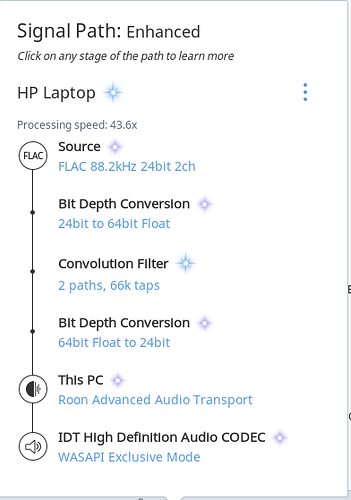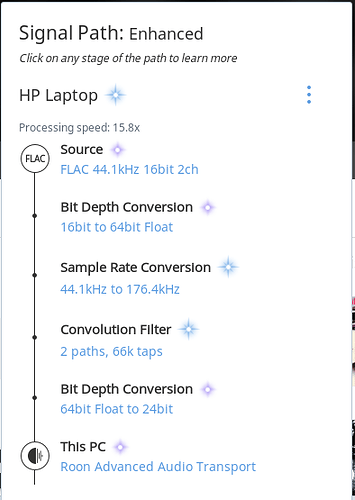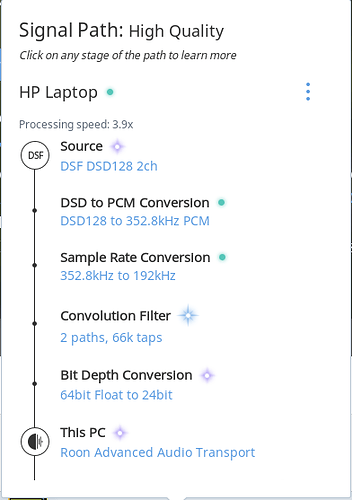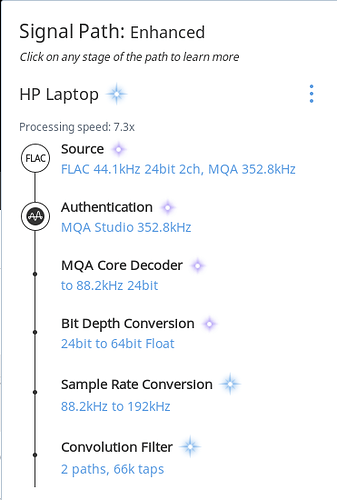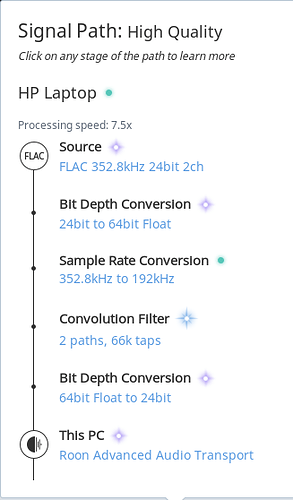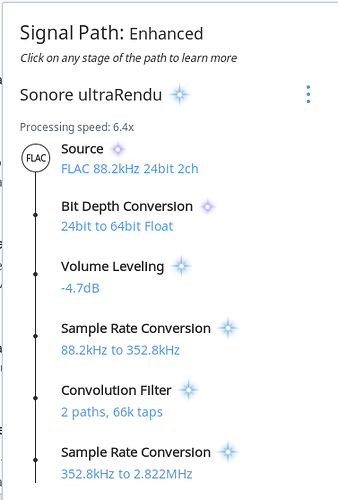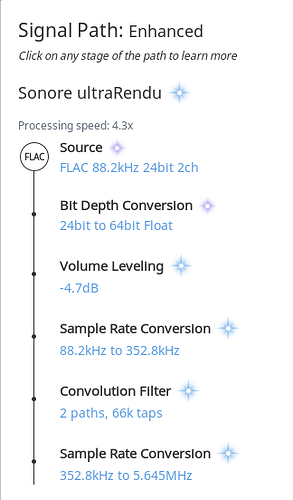So I ran these benchmarks with a Convolution file, from @grossmsj loaded into Roon Core, and replaying 24/88 Daft Punk Random Access Memories as a comparison to the NUC8i7 (4 Core machine)
Convolution Filter running on one Zone 43.6x
Convolution Filter running on two Zones 37.1x (on the original zone)
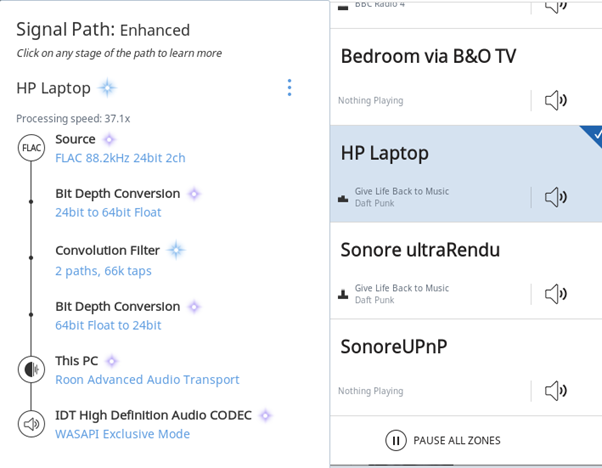
Convolution Filter running on three Zones 37X (on the original zone)
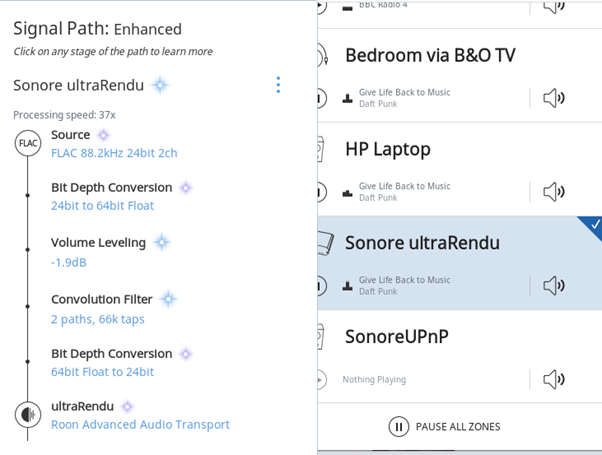
Convolution Filter running on four Zones 40x (on the original zone)
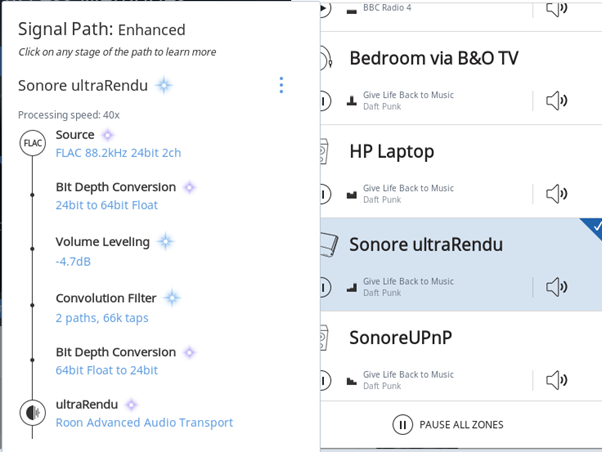
So that’s 4 zones, with DSP on each zone and no impact of each additional zone, and the NUC5i3 ROCK server has no problem supporting 4 playback zones with DSP!
Playback of Redbook file with Convolution DSP and PCM Upsampling (Power of 2) 15.8x (without Convolution DSP it was 21.1x)
Playback of Redbook file with Convolution DSP and PCM Upsampling (Max Rate) 12.7x (without Convolution DSP it was 15.3x)
Playback of DSD64 with Convolution DSP and PCM conversion to Max PCM rate is 7.3x (without Convolution DSP was 7.4x)
Playback of DSD128 with Convolution DSP and PCM conversion to Max PCM rate is 3.9x (without Convolution DSP it was 4.1x)
Playback of DSD256 with Convolution DSP and PCM conversion to Max PCM rate is 2.9x (without Convolution DSP was also 2.9x)
Playback of MQA 352.8KHz with Convolution DSP and conversion to Max PCM rate is 7.3x (without Convolution DSP was 8.6x)
Playback of 24/352.8 with Convolution DSP and conversion to Max PCM rate is 7.5x
(without Convolution DSP was 9x)
‘Upsampling’ 24/88.2 to DSD64 with Convolution DSP is 6.4x
‘Upsampling’ 24/88.2 to DSD128 with Convolution DSP is 4.3x
So final stress test
Zone 1: 24/88.2 with Convolution DSP ‘upsampled’ to DSD128: 4.3x
Zone 2: 24/352.8 with Convolution DSP converted to Max PCM 24/192: 7x
Zone 3: 16/44.1 with Convolution DSP with DSP Attentuating volume: 85.7x
Zone 4: 16/44.1 with Convolution DSP ‘upsampled to DSD64: 6.8x
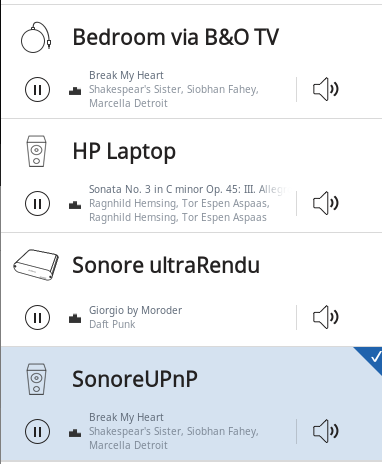
So simultaneous 4 zone playback supported with Convolution DSP on each zone, with some level of DSP conversion, including DSD128 and DSD64 conversion on 2 of the zones.
Have I missed anything?
I think ROCK running on a NUC5i3 can do DSP!
Thanks, Simon.
